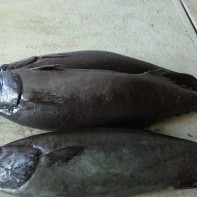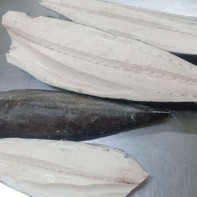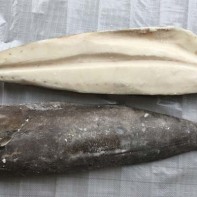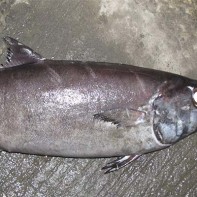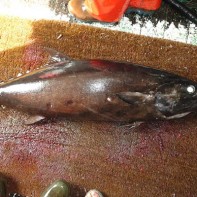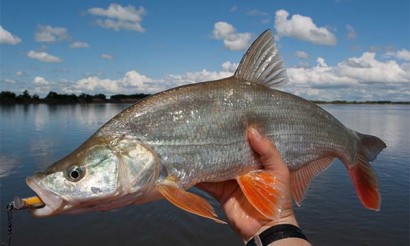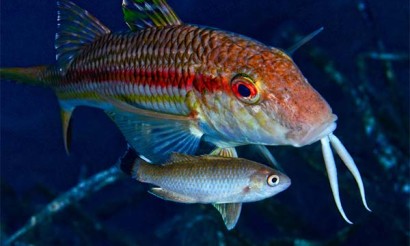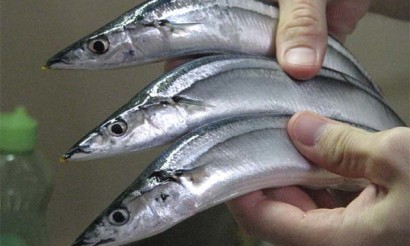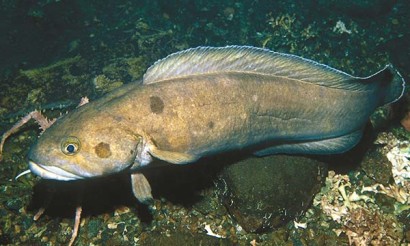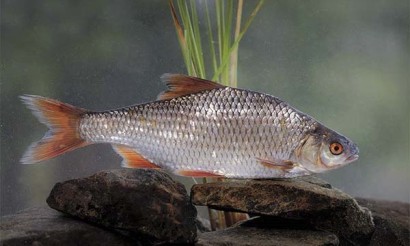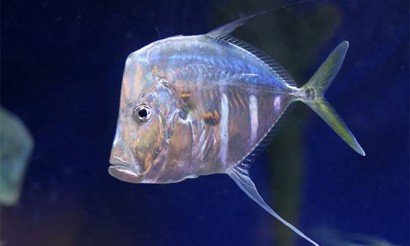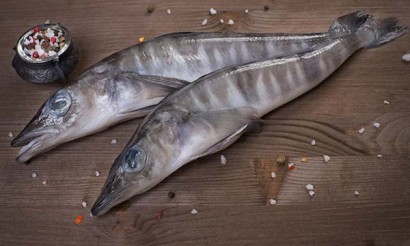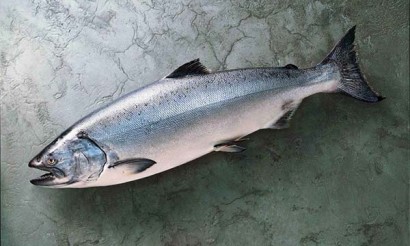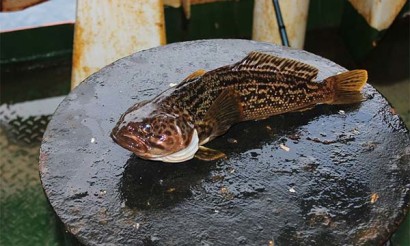Oily fish escolar: photo, description, useful properties
The article is devoted to one of the unusual representatives of the underwater world - Escolar. In detail, let's take apart his way of life, where he lives, how long he lives, the harm and benefit of eating this seafood.
- Escolar: what kind of fish it is, how it looks and where it is found
- How it looks
- Where does it live
- What does it eat?
- Variety
- Composition and calories
- What is the usefulness of oily escolar fish
- Harm and contraindications
- Consequences and rules of use
- Rules of choice and storage
- Where to buy and how much costs
- How to cook fish escolar delicious: recipes
- In the oven
- In the Pan
- Q&A
- What does escolar taste like?
- Fatty or not?
- Are there many bones in the fish?
- Can it be smoked?
- What other oily fish are there
- Butterfish
- Fangfish
- Stromatheus
- Ruveta
- Masunda
- Masluk
- Seriolella
Escolar: what kind of fish it is, how it looks and where it lives
Escolar ((lat. Lepidocybium flavobrunneum)) - An inhabitant of the underwater world, belonging to the family Gempilov. The second name of the individual, given by experts - "pelagic". Dwells only in clear waters of the world's oceans: usually in mid-depth. With the onset of sunset may rise higher. The main part of the skeleton consists of 81 vertebrae (of which - 9 and 18 in the dorsal fins, 1-2 in the anal and 12-14 in the head).
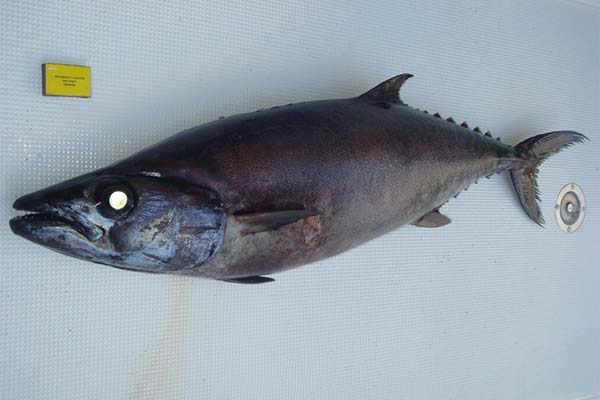
Often caught "by mistake": as bycatch of tuna (the process of production in commercial fisheries).
It is most widespread in the markets of Canada: in this country, catching and further consumption is not prohibited. Experts have assigned a protective status - "causes the least concern".
What does it look like?
Is a very large individual, capable of growing to two meters in length and weighing up to 25-35 kg. The basic color is dark brown. In old age it may change to dark black. Due to the side fins can easily be confused with ordinary tuna.
Where does it live
The main habitat is the Pacific and Indian Oceans, located in New Zealand and Australia, respectively. However, it is almost impossible to meet in the northern part of these oceans.
What does it eat
The daily diet includes squid clams, small specimens of several other inhabitants, a small group of arthropods (crabs, crayfish, lobsters, shrimp, etc.), sand eels and anchovies.
Varieties
There are four species, each with several subspecies:
- Seriolella (gray and white, named after the zoologist Alphon Gucheno, who discovered the species).
- Stromataeus (Chinese, silver and mirror pampas, common peprilus).
- American (Gulf minnow, poronotus).
- Mackerel (mackerel, pelamida, tuna, savory, "kingfish").
Composition and calories
Refers to one of the fattest varieties of the underwater world. It contains a huge amount of Omega-6 acids and vitamins A, B1, B2, B3, B5, B6, B9, B12.
Caloric value - 150 kcal.
Contains 100 grams:
- Fats - 8 g.
- Protein - 16 g.
- Carbohydrates - 0 g.
- Water - 75 gr.
- Ash - 1 g.
Availability of vitamins:
- A - 32 mcg.
- B1 - 0,1 mg.
- B2 - 0.25 mg.
- B3 - 4.7 mg.
- B5 - 0.9 mg.
- B6 - 0.27 mg.
- B9 - 16.0 mg.
- B12 - 2 micrograms.
Composition of mineral elements:
- Calcium - 23 mg.
- Iron - 0.6 mg.
- Magnesium - 26.1 mg.
- Phosphorus - 245 mg.
- Potassium - 374.8 mg.
- Sodium - 90 mg.
- Zinc - 0.75 mg.
- Copper - 0.2 mg.
- Manganese - 0,002 mg.
- Selenium - 36,3 mcg.
What is the usefulness of oily escolar fish
Several useful properties:
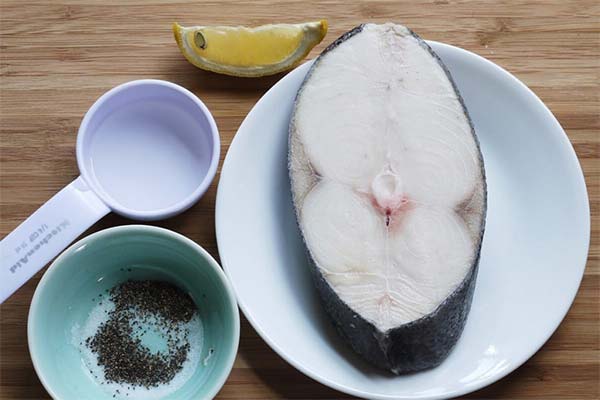
- Normalizes the endocrine system of the body and the heart - this is helped by the minerals potassium and chromium in the chemical composition.
- Able to increase the overall level of immunity.
- Relieves constipation.
- Fights accumulated stress, intrusive thoughts and negativity.
- Restores the function of the nervous system.
- Positively affects mental function, helping to prevent the formation of diseases such as: Alzheimer's (decreased intelligence), dementia (reduced understanding of information received) and atherosclerosis (disorders of protein and lipid metabolism).
- Stimulates hair growth.
Weekly consumption (1-2 times) can help people on a diet. In this case, the cooking process should take place only on the grill, because during the frying process drains most of the fat and oil.
Harms and contraindications
Escolar contains esters (formed with fatty acids), which are not digested by the human body. As a consequence, there may be serious problems with the gastrointestinal tract. In addition to the gastrointestinal tract, the pancreas and liver will suffer.
It should be noted that this specimen of the gempil family is considered toxic and is officially banned in Japan and Italy. Sales in the rest of the world continue to this day, but under two conditions. Suppliers are required to:
- Warn customers about the presence of a biologically derived poison and the possible consequences of consumption.
- Issue instructions (recipes) to help prepare the delicacy correctly and safely.
Consequences and rules of consumption
The special love of gourmets this species (in cooked form) has earned an almost complete absence of bones. When fried, it tastes like halibut meat. However, with frequent use in large quantities, the following complications can occur:
- Digestive disorders (diarrhea, constipation, vomiting).
- Liver dysfunction (itchy skin, fatigue, loss of appetite).
- Disorders of the digestive organs (belching, cramps, flatulence).
- Development of pancreatic diseases (bloating of the stomach, plaque on the tongue).
Important! This fish is contraindicated for people suffering from diabetes and obesity of any stage.
Rules of choice and storage
In order to be sure of the quality of the sea creature, when buying, you should pay attention to several factors:
- On the freshness of the pieces - they should be white in color (in rare cases, a not pronounced golden coloring is possible).
- On the amount of ice in the package - the excess indicates long storage.
- For a pronounced aroma (the smell must be NOT smoky).
Provided that you buy packaged products, be sure to make sure that there is no liquid inside.
Storage of cooked food - strictly no more than two weeks. In frozen form - up to two months.
Where to buy and how much does it cost
You can buy fillets in retail and wholesale: in large city supermarkets, in regional markets, in specialized stores. The price ranges from 300 to 500 rubles / kg.
Tip! Buy only in proven places, from reputable vendors.
How to cook fish escolar: Recipes
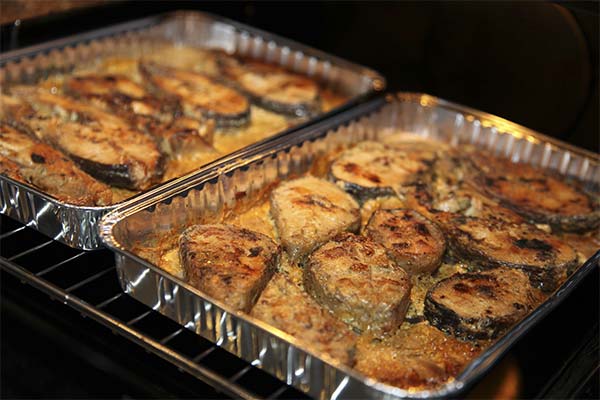
In the oven
Recipe № 1
Necessary ingredients:
- One kilogram of escolar.
- 200-250 grams of fresh lemon.
- 2-3 cloves of garlic.
- 90-100 grams of butter.
Additional spices and herbs - at your discretion and individual taste.
Method of preparation:
- Chop the garlic and put it in a bowl with melted butter. Leave it to stand for 5-7 minutes.
- At this time rub the fish with a medium amount of salt.
- Pour the contents of the bowl on the salted filet and squeeze out 1/2 of the juice of a lemon.
- Cut the rest of the citrus into even slices and place on top of everything.
- Put our stuffing in the oven for 20-25 minutes. Bake it at 200 ° C.
- When time is up - take out and sprinkle with seasonings/greens/spices.
Recipe #2
Ingredients:
- Garlic ..
- Escolar.
- Parsley/cilantro.
- Salt.
- 1 tbsp. olive oil.
- Cheese "Parmesan».
- Egg yolk.
- 1 Tbsp. lemon juice.
- Salt.
Preparation Steps:
- In a deep bowl, chop 3 cloves of garlic and add 20-30 grams of selected herbs. Stir and grind. Add a quarter dessert spoonful of salt and 1 tablespoon of olive oil; stir again.
- Thoroughly wash the fish (as many pieces as you need), give it time to dry (a few hours) and only then put it in the refrigerator, for 1.5 hours.
- After 75 minutes - start preheating the oven (t 150 ° C).
- We put our slightly frozen parts and cook them for a quarter of an hour.
- 5-7 minutes before they are completely cooked - you need to sprinkle them with 100-150 grams of grated Parmesan.
In the remaining time we prepare the sauce:
- In a small container, mix chopped garlic with 1 egg yolk and 1 tablespoon of lemon juice.
- Salt (to taste).
Take out our masterpiece. We serve it with sauce and salad.
Recipe #3.
Ingredients:
- Escolar.
- Lime juice.
- Pepper.
- Salt.
- Mint ..
- Parsley.
- Rosemary.
- Red (hot) pepper.
How to cook:
- Peel the cleaned fish and cut in 4 places (crosswise).
- Brush the inside and outside with a mixture of lime juice, a pinch of salt and pepper.
- In the center of the escolar (inside) put mint leaves (2-3 pieces), 1 sprig of parsley and rosemary, a small piece of pepper.
- Cover the tray with a piece of foil and put our main product on it.
- In the notches we make, put a few slices of lime and a bit of hot pepper on top.
- Cover the whole thing with another layer of foil and make an "envelope" (secure both pieces so they don't let air in).
- We leave it for a full soaking for an hour.
- Then bake for 10-12 minutes at 230°C.
The finished fish is placed on a plate, along with the sauce (a mixture of chopped mint leaves and olive oil).
Recipe №4
Ingredients for this dish:
Step-by-step steps:
- In a glass bowl, dilute no more than 150 ml of soy sauce with 50-70 ml of mineral water.
- After thoroughly mixing, add chopped green onions and a dessert spoonful of ground ginger.
- Clean the fish.
- Start marinade it in the mixture (total marinade time - half an hour, turning it every ten minutes for a full soaking).
- Put out on kitchen paper and let dry.
- After 15-20 minutes put it on a baking tray.
- Bake for 20-25 minutes at 220°C.
- In the meantime we cook rice and put our delicatessen on it.
To this exquisite dish it is recommended to serve a sauce (a mixture of soy and 1 tablespoon of honey).
In a pan
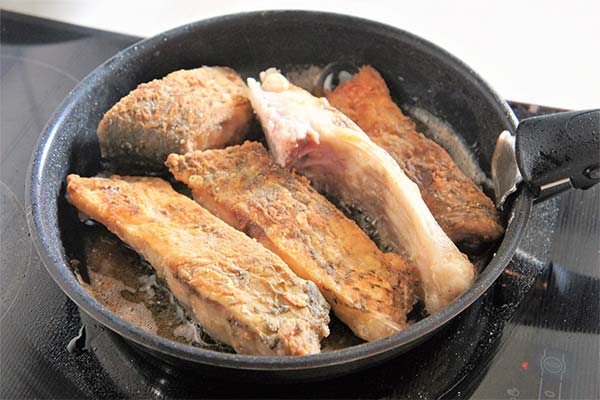
Choosing this option, we will need:
- Fillet.
- Flour.
- Spices (seasonings of choice).
Cooking steps:
- Pre-cleaned piece should be cut into small (equal) portions.
- If you want and taste - give them a delicate flavor, sprinkling them with salt / pepper / coriander.
- After you have done all these steps, roll them in wheat flour.
- Fry in vegetable oil only!
- When serving, sprinkle with finely chopped herbs.
Q&A
What does escolar taste like?
According to the Internet, many users report that the meat is thick (juicy) and melts in the mouth when they eat it, with a slight hint of sourness and creaminess.
Fatty or not?
It is considered one of the fattest fish in the underwater world. This is due to its high content of Omega-3 and Omega-6 acids.
The fat content varies from 10 to 15%.
Are there many bones in the fish?
One of the advantages of fish is its almost complete absence of bones. Those that are there can be removed when cleaning and cutting.
Can it be smoked?
Like any other fish, escolar can be smoked cold or hot.
What other butterfish are available
Butterfish
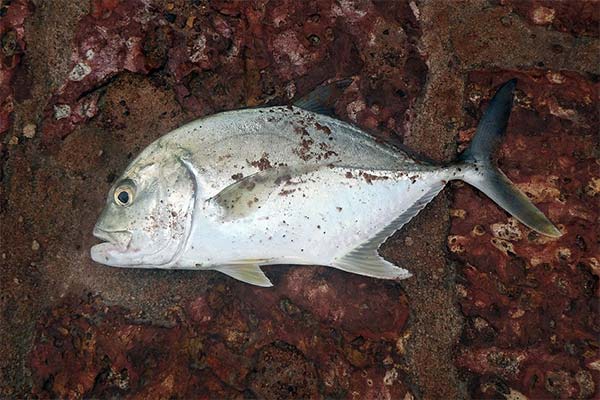
Butterfish (Peprilus triacanthus) is one of the butterfish species. It lives in the Pacific and Atlantic Oceans. The body is a small oval of length not more than 30-35 cm. The maximum weight can reach the 6 kg mark. It is harvested year-round, by "throwing" the net on the bottom and then catching it. It is sold smoked or frozen.
The caloric value is 180-200 kcal. It includes fatty acids, phosphorus, protein and vitamin B. By consuming it, you can noticeably reduce the level of tension in the body and increase its efficiency. It reduces by 5-6 times the development of asthma. In addition, it contains special minerals that can slow the aging process (for this it is important to use at least 1-2 times a month).
It can be cooked in several ways: stewed, salted, fried and smoked. Great with green onions, tomatoes, peppers and other vegetables. Some Japanese chefs add Butterfish to rolls and sushi.
Refrigerated product is stored for 2-3 days, frozen - no more than 2 months.
Fangfish
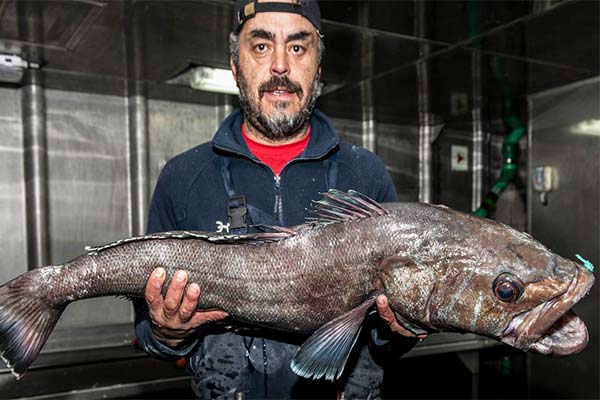
Fangfish (Dissostichus) is a member of the Nototenidae family. Habitat - waters of the Indian Ocean. It gained its fame relatively recently - in the late 19th-early 20th centuries. Because of the difficult characteristics of catch, it is difficult to find on the shelves of stores.
In one kilogram can contain from 2000 to 2500 thousand kcal. Fat content is 30-35%. Vitamins include nicotinic acid, group B (thiamin, adhermin, folic acid), nickel, iron, phosphorus, magnesium, chlorine and sodium. Rarely found are chromium, molybdenum and fluoride.
Monthly consumption stabilizes heart and vascular function. It can be cooked in any way. Of particular importance is an ear made of toothfish in a composition with burbot meat and vegetables. Some housewives use the fish as a pickle.
Stromateus
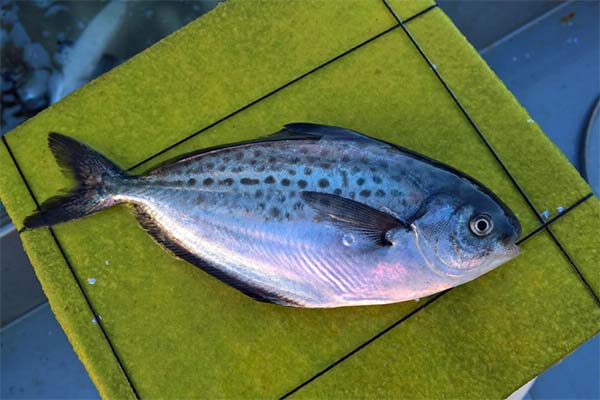
Stromatheus (Stromateus brasiliensis, Stromateus stellatus) is a species of warm-water fish, family Stromatheus. It inhabits mainly the southern and southwestern parts of the Atlantic Ocean. One of the smallest of the butterfly species, with a body only 40-70 cm long and weighing no more than a kilogram. It has light white, buttery meat. The fat content does not exceed 10% and the protein content 15-25% or less.
The most suitable cooking method is pickling or smoking.
Ruvettes

The ruvette (Ruvettus pretiosus) is a species of bony group of marine vertebrates that inhabits most of the Mediterranean Sea. Body length - 250-320 cm, weight - up to 65 kg.
Its average life span is from 5 to 15 years.
Has a monochromatic coloration - brown or black. Caught in the network randomly and is difficult to find in grocery stores.
Contains lanolin (animal wax), which is not digested by the human body.
Mazunda
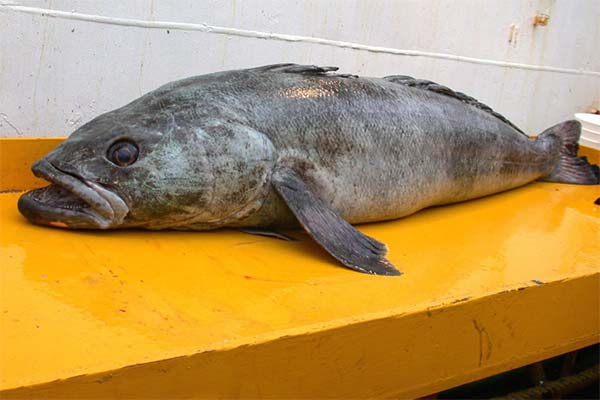
The mazunda is one of the largest representatives of the perch species. It lives in the Pacific, Atlantic and Indian Oceans. You can buy it only in specialized stores, in frozen form.
It contains a huge amount of animal protein and polyunsaturated fatty acids. Chromium and potassium "being" in it, it brings in order the work of human endocrine system.
Cranberries
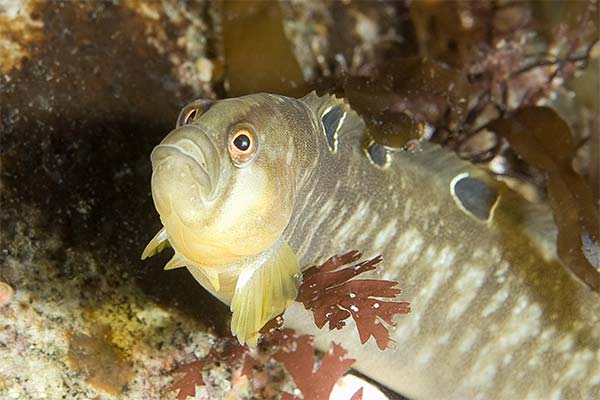
The maslik (Pholis gunnellus) is one of the marine "ray-footed" inhabitants of the White and Baltic Seas. Spawning (100 to 180 pieces) is laid in late fall. Usually lives in deep waters, occasionally falling into fishing nets.
Occasional consumption of masliks helps cope with sclerosis. Doctors recommend, in moderation, including fish in your diet for pregnant women.
Seriolella
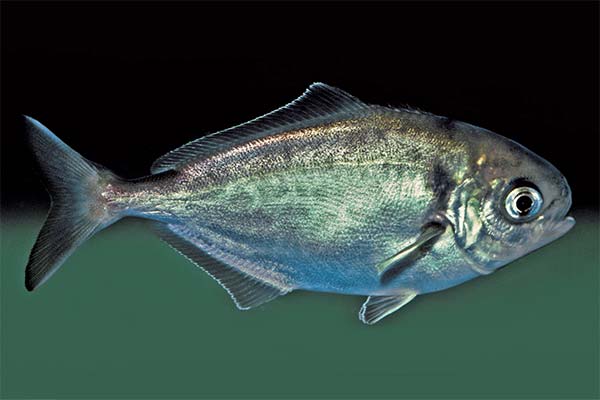
Seriolella (Seriolella brama) - this unusual name is due to the silver coloring of its body. It lives in Zealand, in the waters of the Pacific Ocean. With each passing year - the body becomes darker. It is considered the fattest oily fish (fat content up to 40%!). After catching - the head and tail are immediately cut off, and the carcass goes to freeze.
«Important: All information on this site is provided for informational purposes only. for informational purposes only. Please consult with your health care professional before using any of the recommendations. specialist before using any of the recommendations. Neither the editors nor the authors shall be liable for any possible harm caused by materials."

